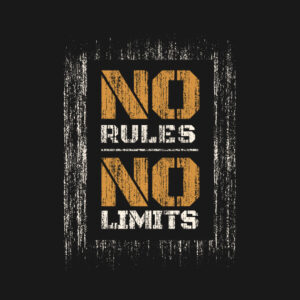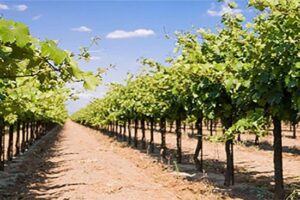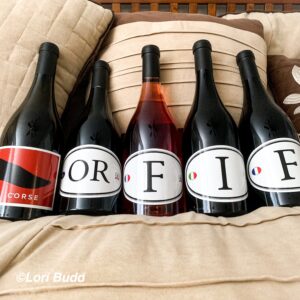Wines are all about soil, climate and the vines. Their interaction is what makes each wine unique. Locations brand understands this but strives to break the rules of appellations. Blending across all of the major appellations, to create wine that represents a country. (or state) Their intention is to demonstrate the best of what a LOCATION has to offer.
Rules and More Rules
Let’s take a step back and see what LOCATIONS is trying to break away from. For  example; Bordeaux wines have strict regulations about what grape varieties can be grown where, the mandate that all AOC wines are dry farmed and that the wine can’t be higher than 14% ABV. If you stray from these directives, you must label your wine “table wine” and you lose all the beautiful perks that go along with the AOC labels.
example; Bordeaux wines have strict regulations about what grape varieties can be grown where, the mandate that all AOC wines are dry farmed and that the wine can’t be higher than 14% ABV. If you stray from these directives, you must label your wine “table wine” and you lose all the beautiful perks that go along with the AOC labels.
Within the USA, the TTB has their own wine label regulations. You may use the name of a single grape variety on a label as the type designation of a wine if 75% or more of the wine is made from the named grape variety, and the entire 75 percent of the named grape variety was grown in the labeled appellation of origin. A viticulture appellation on the label indicates that a minimum of 85% of the wine was produced by grapes grown in that named area.
Rules are Made to be Broken
Dave Phinney doesn’t believe in boundaries. Or should I say, he doesn’t believe in “being retained by boundaries.” LOCATIONS wines are all non-vintage, non-appellated and non-varietal which allows them to break through the walls of regulation and create wines that are simply different than anything else you have ever tasted.
 His introduction to the wine world, is not as typical as you would think. But I don’t think anything about Dave Phinney is typical. He was studying political science at the University of Arizona. His political career underway, working for a congressman. Unfortunately, but fortunately for wine lovers, he realized this was not the path he wanted to pursue. His friend Tom, whose family was in the wine industry, was traveling to Florence, Italy to study abroad for a semester. Someone backed out at the last minute, and Dave was asked if he wanted to take the other person’s place. Without any hesitation, he agreed.
His introduction to the wine world, is not as typical as you would think. But I don’t think anything about Dave Phinney is typical. He was studying political science at the University of Arizona. His political career underway, working for a congressman. Unfortunately, but fortunately for wine lovers, he realized this was not the path he wanted to pursue. His friend Tom, whose family was in the wine industry, was traveling to Florence, Italy to study abroad for a semester. Someone backed out at the last minute, and Dave was asked if he wanted to take the other person’s place. Without any hesitation, he agreed.
It was really Tom who got Dave into enjoying wine. But he was also drawn to the agricultural side of wine. Fueling his interests, he read an article on sustainable farming in National Geographic in December of 1995. In 1997, he worked for Robert Mondavi, where the employees are encouraged to become home winemakers. Between working in the cellar at Mondavi and working the fields for his home project, he quickly realized that if he was going to work this hard, it would be for his own label. The following year, he purchased two tons of Zinfandel and as they say, the rest is history.
Vineyards are Everything
 The first thing Dave realized was that the vineyard sites are everything. He admits it may be a bit cliché, but he believes that 90% of wine is made in the vineyard. He constantly is looking at the vines, in order to figure out the site itself. Honing in on the trivial differences between one vine and the next. He believes more in “feeling” the vineyards than “counting.” He has the ability to look at the vineyard and gain the overall feeling of whether it will work or not.
The first thing Dave realized was that the vineyard sites are everything. He admits it may be a bit cliché, but he believes that 90% of wine is made in the vineyard. He constantly is looking at the vines, in order to figure out the site itself. Honing in on the trivial differences between one vine and the next. He believes more in “feeling” the vineyards than “counting.” He has the ability to look at the vineyard and gain the overall feeling of whether it will work or not.
Dave claims that it all begins in the vineyard. His brands are developed after he finds the vineyard sites. A lot of experimentation occurs before he develops his labels. Each site is treated individually. There is no one rule that applies to all, when you are looking to obtain the best fruit possible. LOCATIONS wine strives to make wine less complicated, while increasing the the complexity in the glass by harvesting across multiple vineyards.
Simple Yet Challenging
“Make the best possible wine from a given country or location.” Sounds pretty simple, doesn’t it? But take a moment and truly digest that statement. The amount of travel and pure vastness of acquiring fruit from vineyards across an entire state or country is astronomical.
I am not one to say that smoking is beneficial for anything, however if it wasn’t for a cigarette and a taxi, LOCATIONS may never have come to fruition. Dave and his French winery general manager were standing outside Charles de Gaulle airport smoking a cigarette. They were discussing what they were going to do with the remainder of the fruit they had harvested for Orin Swift. At that moment a taxi drove up with with the country code “F” bumper sticker on it. And once again, as they say, “The rest is history.”
They began in France with their Grenache, Carignon, and Syrah from the Roussillon. Then traveled to the Rhone to obtain Grenache and Syrah, some more Grenache from Provence and some Cabernet Franc from Bordeaux to create the first “F LOCATIONS.” Following the France concept, they traveled to Spain and Italy to obtain fruit by visiting multiple areas to harvest their fruit. Today, you can also find Argentina, Portugal, New Zealand, Corsica, California, Texas, Oregon and Washington.

The Wines
F6 Rosé (SRP: $19.99)
? clear, medium Groseille in color
?? clean, light aromas of sour cherry and apricot
? dry, high acidity, medium alcohol, medium (-) body, medium flavors of cherry, spice, pith
? 100% Grenache, 14.5% ABV medium finish, drink now.
WA5 Washington Red Wine (SRP: $19.99)
? clear, deep purple in color
?? clean, medium aromas of floral, spice and blackberry
? dry, medium acidity, medium tannin, medium alcohol, medium body, medium (+) flavors of cola, cherry and tea
? Syrah, Merlot and Petit Sirah blend, 15% ABV, medium (+) finish, drink now can age for 1-2 years
Corsea – Corsican White Wine (SRP: $19.99)
? clear, medium gold in color
?? clean, light aromas of petrol and peach
? dry, medium acidity, low alcohol, medium body, Medium (-) flavor of peach, petrol and honeysuckle
? 100% Vermentino, 12% ABV, long finish, drink now
F5 – French Red Wine (SRP: $19.99)
? clear, medium garnet in color
?? clean, medium (+) flavors of red fruit, cherry, plum, slight hint of smoke and spice
? dry, medium (+) acidity, medium tannin, high alcohol, medium (-) body, light flavors of cherry, spice and cigar
? Grenache, Syrah and Bordeaux varietals blend, 15% ABV, medium finish, drink now, age 2-3 years
OR6 – Oregon Red Wine (SRP: $19.99)
? clear, medium (+) purple in color
?? clean, medium aromas of earth, floral and pepper
? dry, medium acidity, medium (-) tannin, medium alcohol, medium (-) body, medium (+) flavors of black cherry, herbs, earth and tobacco.
? 100% Pinot Noir, 14.5% ABV, medium (+) finish, drink now
I4 – Italian Red Wine (SRPL $19.99)
? clear, medium purple in color
?? clean, pronounced aromas of black cherry, baking spices and smoked meat
? dry, medium acidity, medium (+) tannin, medium alcohol, medium body, pronounced flavors of black berry, hints of vanilla, and date
? Negroamaro, Nero d’Avola, and Barbera blend, 14.5% ABV, long finish, drink now or age for 1-3 years
I love to travel, however, life often gets in the way and I can not always visit the places that I would like. With LOCATIONS wines, although you may not be physically there, you can allow your palate to transcend you. Why not grab a bottle of LOCATIONS, cook a meal from the region and envision yourself on vacation? Find out more about Dave Phinney, LOCATIONS wine and where to pick up your own bottle to travel with visit their website.
~Sláinte!
Please follow me on Instagram, Twitter, and Facebook. You can also find me on YouTube and if you are interested in wine pairings, follow my other blog, Wine Pairing with Dracaena Wines. And don’t forget about my FREE wine education series, Winephabet Street. Sláinte!
Please Visit our Sponsors:


A concise and well written piece on how rules and location play in the wine business. Wonderful to read the Dave Phinney believes 90% of making wine is based on the vineyard.
Thanks Michael. He is a maverick but knows what he is talking about!